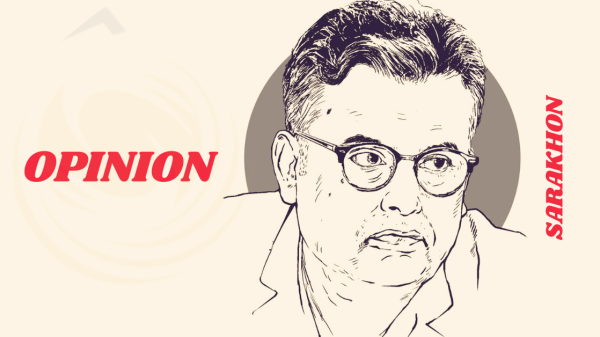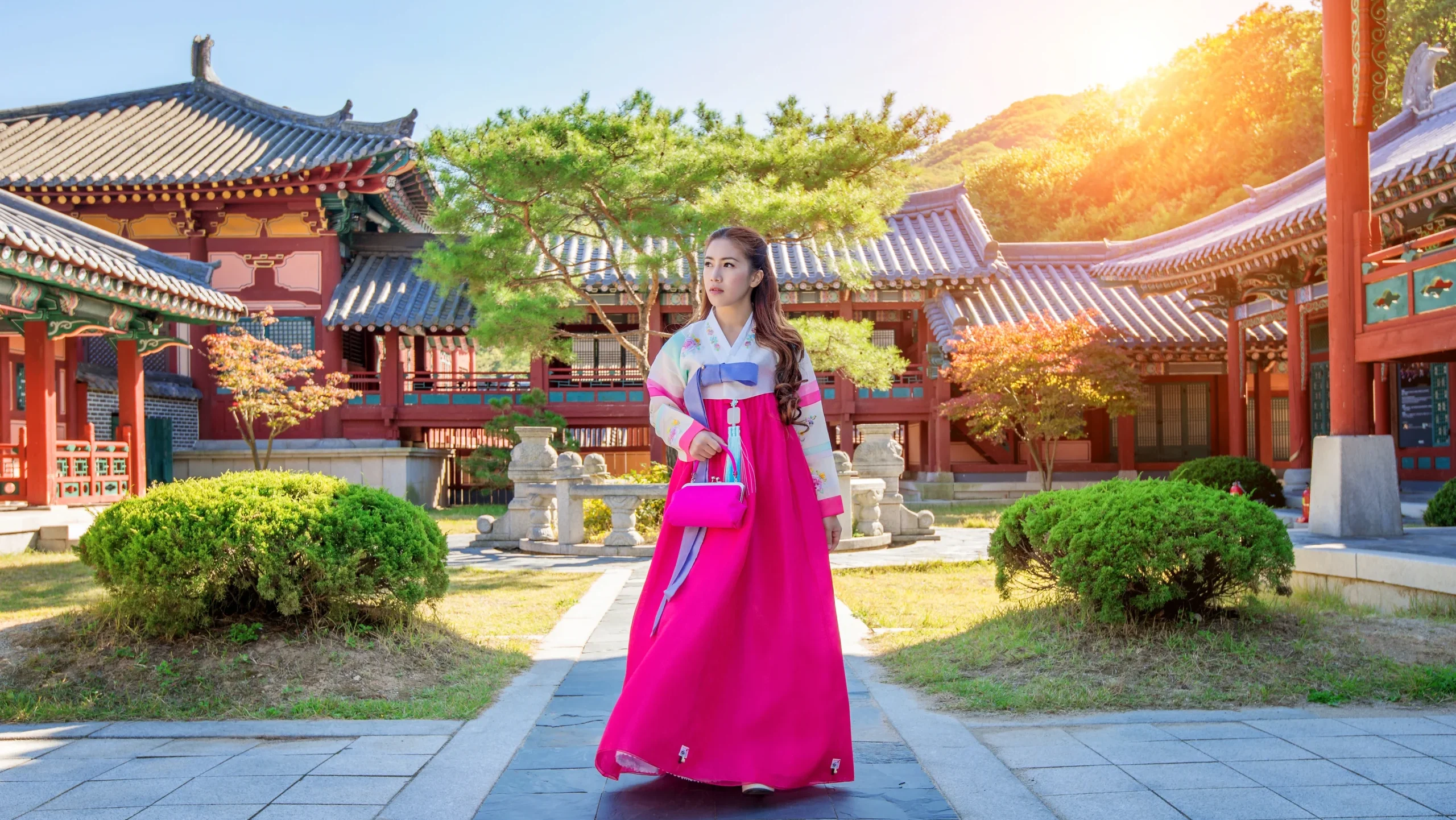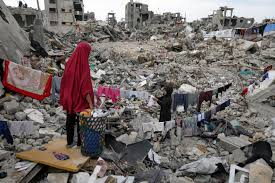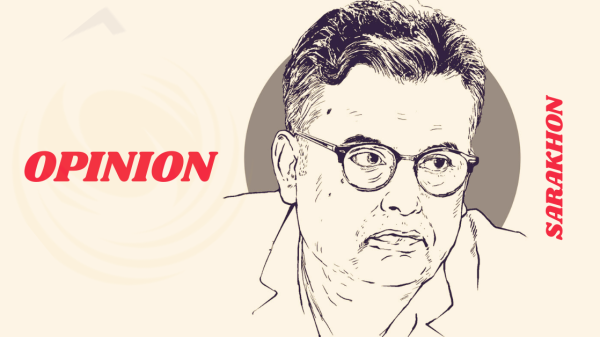Smiles of the Enslaved: Silence, Fear, and the Disappearing Dignity

The Theatrics of Religious Harmony
In mid‑October of 2021, during the Awami League’s tenure, after an incident in which religious extremists manipulated a sacred scripture at a Durga Puja pavilion in Cumilla, several Hindu homes were attacked and vandalized. In response, many Hindu families hastily moved their daughters to safer places in Dhaka. The international outcry that followed prompted the Awami League to launch a countrywide campaign to showcase religious harmony. They adopted a peculiar program: dressing a Hindu man in a dhoti and wooden beads around his neck, a Maulvi in a cap and lungi, a Buddhist in saffron robes, and a Christian in a suit—all placed in the front row. Behind them, party workers paraded in processions promoting interfaith harmony across every district.
At the time, I contacted a few district presidents, secretaries, or MPs from the Awami League, many of whom had been friends since our student days and were now senior citizens like me. I asked them, “As educated and seasoned politicians, didn’t you feel any shame in dressing people up like that and parading them around?”
In Bangladesh, there’s a long-standing tradition of using costumed dramatics, or sang, as entertainment. West Bengal has extensive literature in both Bengali and English on the subject. And even those unfamiliar with these texts have at least read Sharat Chandra Chattopadhyay’s Srikanta, which contains a famous scene involving a shapeshifter. Remember how helpless Srinath was dressed as a tiger? The master of the house ordered that the tiger costume’s tail be cut off. Annoyed, the woman of the house muttered from the inner chambers, “Let it be. It’ll come in handy.”
The master of the house was a symbol of power. When he wished, he clipped the tail of the powerless—or even their head.
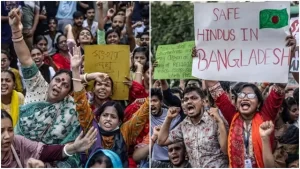
Hindus in Bangladesh: Powerless Like Srinath
Hindus and other minorities in Bangladesh are essentially in the same position as Srinath. The powerful can cut their tail—or their head—at will. Like Chimmoy, who is now imprisoned. Countless militants have been released, yet Chimmoy remains jailed simply for demanding that his community be allowed to live in this country with dignity. They are children and rightful owners of this land, born here for generations over a thousand years. They only sought recognition of their birthright—and for that, he is behind bars, denied even bail.
In a previous article, I compared Chimmoy’s movement to that of Martin Luther King Jr. The essence of that comparison was to show that Chimmoy’s goal is not to leave the country but to build a tradition of struggle so that his community can live here with dignity for generations. In fact, his movement paved the way for establishing peace in Bangladesh.
But those meticulous designers who wish to return to the 1947 arrangement are charting a different course. If we return to that framework, the Nehru-Liaquat Pact would be revived. Then, Hindus in Bangladesh would legally be allowed to sell all their assets and emigrate to India, and the Indian government would be obliged to grant them citizenship. Likewise, Indian Muslims could come to Bangladesh (though they likely wouldn’t leave a nation of economic growth and rule of law to move to an unstable country). This is human nature—the same reason why even the majority in Bangladesh aspire to become minorities in America.
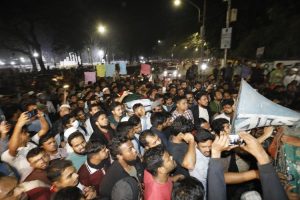
Legal and Property Chaos in a 1947-Style Arrangement
Another issue with reverting to the 1947 setup is the legal chaos over land ownership in Bangladesh. This isn’t just hypothetical—it’s backed by High Court judgment. If someone’s name was recorded in the first survey and they did not legally transfer the land, then no matter how many documents have been issued or sales made since, the government must return the land to the legal heirs of the original owner.
If we go down the 1947 path, imagine the chaos even just over property ownership in Dhaka, let alone the whole country. Any movement may win or lose, but the rule of law is permanent—it cannot be forcibly changed. Therefore, Chimmoy’s peaceful struggle is in Bangladesh’s best interest, to secure dignity and continuity for all.
Yet, he continues to languish in jail.
The Inner Strength of Chimmoy’s Struggle
Chimmoy loses nothing from this. Without enduring great hardship, who has ever emerged victorious? And those who make such sacrifices always have the silent blessings of many. Chimmoy, too, has the goodwill of countless members of the majority, minority, and international humanitarians.
Still, one rational individual messaged me on WhatsApp after reading my previous article about Chimmoy, saying he would personally tell me how flattering Chimmoy was in front of his party leaders. I didn’t reply. Because unless someone truly understands the mental state of a minority from a majority’s perspective, they can’t comprehend how often minorities are forced to act—to perform, to play roles for survival. It’s not their true self. The state renders them so powerless that they must assume these roles.
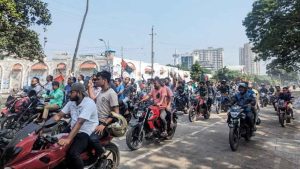
The Humiliation and Fear After August 5
Since August 5, systematic attacks and persecution of Hindus have continued across Bangladesh. If there had been an Indian leader like Indira Gandhi—someone with democratic and humanitarian values, someone whom even Atal Bihari Vajpayee once described as embodying the goddess Durga—and if she had opened the border for Hindus, Bangladesh would by now be almost devoid of Hindus.
A journalist friend of mine recently visited his Hindu-majority village. He shared the following story: before August 5, he had tried to buy a plot of land there. The Hindu seller had asked for 15 lakh taka (1.5 million) per shatak (around 435 square feet). Now, that same seller is willing to accept whatever price he can get—he just wants to leave for India.
Meanwhile, a paved road built during the previous government has enabled motorcycles to pass through the village every morning and evening. Youths aligned with the ruling forces or recent victors of political movements now use this route for aggressive rallies and displays of power. For families with adult daughters, land deals are no longer the priority—their only concern is how to leave for India as quickly as possible.
The Muradnagar incident, in which a Hindu family was attacked and their daughter assaulted, has only deepened this fear.

The Smile of the Enslaved
And yet, after all this, when Hindus must smile at government events at Dhakeshwari Temple, take selfies with those in power, nod along to statements like “there are no minorities here, we are all equal citizens”—that smile, that nod, is not just performance. It is the smile of the enslaved.
Because they are enslaved, members of this community must celebrate their festivals with smiles on their faces. The majority—whether in Bangladesh or elsewhere—often fail to understand the psychology of minorities. They cannot grasp how dry and lifeless that smile is. Like desert sand that holds the tears of lost oceans and rivers from millennia ago. That smile emerges only when there are no tears left. When the eyes themselves become deserts.
Just as when Professor Kushal Chakraborty from the University of Chittagong was humiliated by students in the Vice Chancellor’s room—unless one becomes a true ‘enslaved’ being, one cannot survive such disgrace. One may even be driven to suicide. And yet, no punishment has been given to those students. Because who would punish them?
The first responsibility was the Vice Chancellor’s, in whose room the incident took place. But the students already made it clear—he did not earn the post through merit; they placed him there. On the other hand, the head of government herself declared on the first day that he, too, was appointed by the students—not by her own qualifications. Her position, like the VC’s, is similarly compromised. In fact, the entire government is in that position.
And those students? They may have been students before the movement, but now the entire world knows who they really are.
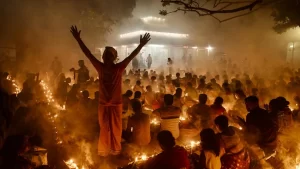
The Future of Two Crore Hindus in Bangladesh
In this context, the question is whether Bangladesh’s 20 million Hindus (more than the total population of many countries) will continue to live the life of the enslaved. Will they, during the next Durga Puja, wear the ‘smile of the enslaved’ and perform rituals under state direction? Or will they, like Chimmoy, Kushal, the Draupadis of Muradnagar, and the persecuted Hindus across the country, begin thinking seriously about their dignity and future?
Whatever else may be true, no matter how powerful the oppressor appears, we must remember that in the year 2025, no one can be kept a slave forever. The Hindus of Bangladesh are not a people without heritage. They are the inheritors of a proud legacy—from King Pratapaditya to Surya Sen, from Binoy, Badal, and Pritilata. And not just for them, but for all the oppressed peoples of the world, Rabindranath Tagore gave us this truth:
“In one instant, raise your head—stand together and see,
He whom you fear is more cowardly than thee.
The moment you awaken, he will flee in dread;
And if you stand before him, even once,
Like a stray dog, he will shrink in fear and vanish;
The gods turn their backs on him—he has no ally left.”
Embracing this truth of Rabindranath—not by looking abroad, but from within—Bangladeshi Hindus must rise and free themselves from the condition of bondage. For it is only “where the mind is without fear, and the head is held high,” that the enslaved spirit triumphs even against the harshest glare of tyranny.
Author:
Swadesh Roy
National Award-winning journalist, Editor, Sarakhon and The Present World
Note: The first poem is an unofficial English translation of Tagore’s original Bengali verse. The second is Tagore’s own translation from Gitanjali (1912).



